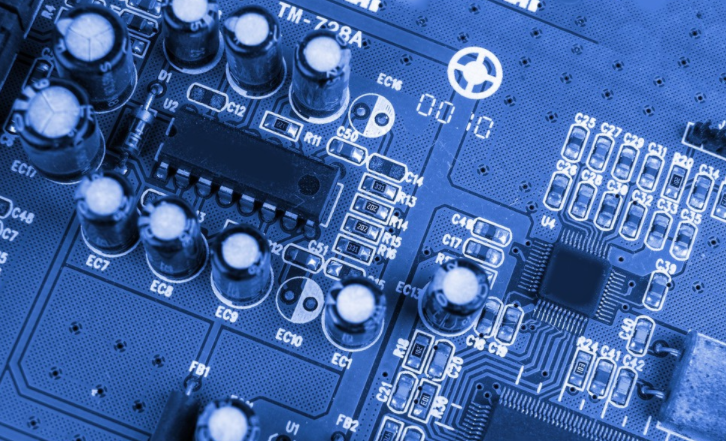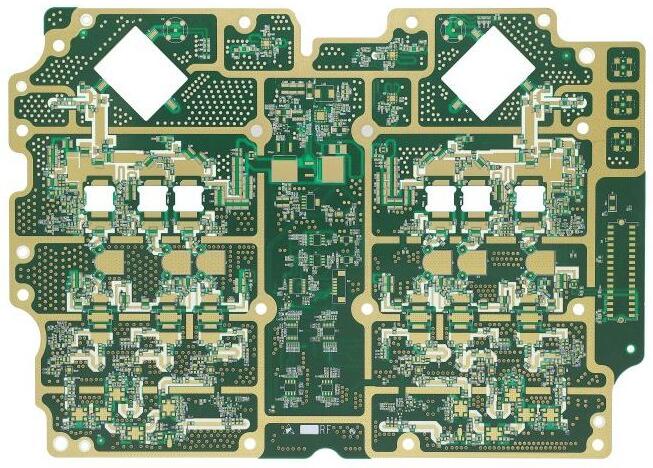
DetaiLED explanation of printed circuit board through blockage solution
PCB through-hole must be blocked After a lot of practICe, the traditional aluminum plug hole process has been changed Through holes act as interconnections and conductors The development of electronic industry has also promoted the development of electronic technology. Printed circuit boards also put forward higher requirements for PCB manufacturingtechnology and Surface Mount Technology And should meet the following requirements at the same time:
1. The solder mask can be plugged or not plugged;
2. There must be tin and lead in the through hole, with a certain thickness requirement (4 microns), and no solder blocking ink is allowed to enter the hole. Causing tin bead to be hidden in the hole;
3. The through-hole must have solder blocking ink plug hole, which is opaque, and cannot have tin ring, tin beads, and flatness requirements With the development of electronic products in the direction of "lightweight", thin, short and "very SMAll", printed circuit boards have also developed to high density and high difficulty Therefore, a large number of SMT and BGA printed circuit boards have appeared, and customers need to plug and unplug when installing components
PCB board

(1) Prevent short circuit caused by tin passing through the component surface from the via hole when the printed circuit board is wave soldered; Specially when we put the via hole on the BGA pad
(2) Avoid flux residue in the via hole;
(3) After the surface mounting of the electronics factory and the assembly of the components are completed, the printed circuit board must be vacuumed to form a negative pressure on the testing machine to complete:
(4) Prevent surface solder paste from flowing into the hole, causing false soldering and affecting placement;
(5) Prevent the tin balls from popping up during wave solving
Realization of Conductive Hole Plugging Process
For the installation of surface mount boards, especially BGA and IC, the through-hole plug must be flat, convex and concave faces plus or minus 1mm, and the edge of the through-hole must be free of red tin; The through-hole hides the solder ball. In order to meet the customer's requirements, the process of plugging the through-hole can be said to be varied The process flow is too long to control During hot air leveling and green oil welding resistance test, the oil often falls; Oil explosion and other problems may occur after solidification Now, according to the actual production situation, we have summarized various plugging and unplugging processes of printed circuit boards, and compared and explained the advantages and disadvantages of this process: the working principle of hot air leveling is to use hot air to remove the excess solder on the surface and holes of printed circuit boards, and the remaining solder is evenly covered on the bonding pads, non resistance welding lines and surface packaging points, which is one of the surface treatment methods of printed circuit boards
1. Hole plugging process after hot air leveling
The process flow is: board surface solder mask-HAL-plug hole-curing. Non clogging process is adopted in production After the hot air is blown flat, the aluminum plate mesh or ink blocking mesh is used to complete the through hole blockage of all fortresses required by the customer Blocking ink can be photosensitive ink or thermosetting ink Under the condition that the wet film color is consistent, the plugging ink shall be the same as the ink on the circuit board surface This process can ensure that the through-hole will not lose oil after the hot air is leveled, but it is easy to cause the ink of the plug hole to pollute the board surface and uneven Customers are prone to false soldering (especially in BGA) during mounting. Many customers do not accept this method
2. Hot air leveling and plug hole technology
2.1. Plug the hole with aluminum plate, cure, and polish the board to transfer the graphics
This technical process uses a CNC drilling machine to drill out the aluminum sheet that needs to be plugged to make a screen Plug hole ink can also be used with thermosetting ink, and its characteristics must be high hardness, The shrinkage of the resin is very small, and the adhesion with the hole wall is good The technological process is: pretreatment - plug hole - grinding disc - pattern transfer - etching - surface resistance welding This method can ensure that the through hole plug hole is flat, and hot air leveling will not cause quality problems such as oil explosion and oil drops at the hole edge However, this process requires copper to be thickened so that the copper thickness of the hole wall meets customer standards The requirements for copper plating on the whole plate are very high, and there are also high requirements for the efficiency of the grinder to ensure that the resin on the copper surface is completely removed, and the copper surface is clean and free of pollution Many PCB factories do not have thick copper process, and the equipment efficiency does not meet the requirements, resulting in that PCB factories do not use this process too much
2.2. Directly screen print the board surface solver mask
This process uses a CNC drilling machine to drill out the aluminum sheet that needs to be plugged to make a screen The 36T screen is used to directly screen the surface of the circuit board The process flow is: pretreatment of plug hole wire mesh, pre drying, exposure, development and curing This process can ensure that the through-hole is well covered with oil, the plug hole is flat, and the color of the wet film is consistent After hot air blowing, it can ensure that the through-hole is not tinned and the tin bead is not hidden in the hole, but it is easy to cause ink in the hole after curing Poor solderability caused by pad; After the hot air is blown flat, the edge of the through-hole bubbles and the oil is removed It is difficult to use this process to control production. Process engineers need to adopt special processes and parameters to ensure the quality of plug holes
2.3 Insert the aluminum plate into the hole, pre cure and polish the developed aluminum plate, and then conduct resistance welding on the surface of the circuit board
Use a CNC drilling machine to drill aluminum plates that need plug holes to make screens, and install them on the shift screen printing machine for hole filling The sealing hole must be full and protruding on both sides The technological process is: pretreatment of solder mask on the surface of plug hole prebaked development prebaked plate Because this process uses the plug hole solidification to ensure that the through hole after HAL will not fall or explode, but after HAL, it is difficult to completely solve the problem of tin beads hidden in the through hole and tin on the through hole, which is unacceptable to many customers
2.4 The solder mask and the plug hole on the plate surface shall be completed at the same time
This method uses a 36T (43T) screen, which is installed on the screen printing machine. When the circuit board surface is completed with a pad or a nail bed, all through holes are blocked The technological process is: pretreatment, silk screen pre baking, exposure, development and curing Short processing time, high equipment utilization Ensure that the through holes do not lose oil after the hot air is leveled and will not be tinned through these holes However, due to the use of wire mesh to block the hole, there is a lot of air in the through-hole, Air expands and penetrates the solder mask, causing voids and unevenness A small number of through holes are hidden in the hot air of the printed circuit board









